We’ve all seen it—an article or meme in your timeline or newsfeed that seems absolutely crazy or unbelievable. The thing is, there’s a lot of misinformation out there these days. So if a claim or “fact” seems too good to be true, or it makes you really upset, it’s very possible that it could be false or misleading. But there’s good news: you have tools you can use to help sort through misinformation and identify what’s real and what’s fake. Misinformation isn’t just annoying, it can be dangerous. But by identifying it, you can help stop the spread of it.
wikiHow and the United Nations Verified Initiative Video.By using this service, some information may be shared with YouTube.
wikiHow and the United Nations Verified Initiative collaborated to bring you some essential tips to help you verify what you see online and stop the spread of misinformation.
StepsMethod 1Method 1 of 3:False or Misleading Articles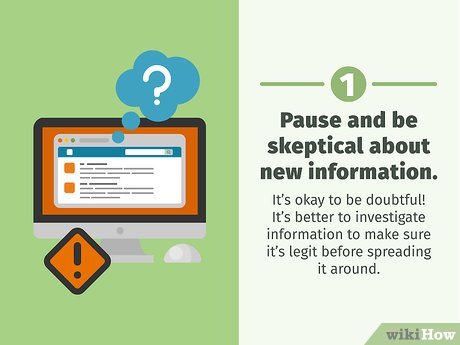
1Pause and be skeptical about new information. Whenever you come across an article or post sharing information that you haven’t seen before, take a second to consider it. Don’t just scroll by accepting it as fact or share the information without exercising some skepticism first.XIt’s okay to be doubtful! It’s better to investigate information to make sure it’s legit before spreading it around.Misinformation can be really harmful, especially if it’s about something serious such as COVID-19.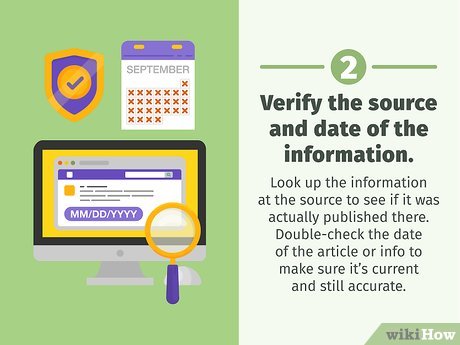
2Verify the source and date of the information. Look up the information at the source to see if it was actually published there. Double-check the date of the article or info to make sure it’s current and still accurate. Usually, the date is located next to the author of the article.XFor instance, if you see a quote or a post that says a certain news organization published an article about a recent terrorist attack, look it up on that news organization’s official website to see if they really did.The date can be a really big deal. For instance, an article that talks about new coronavirus cases from 6 months ago may not be accurate right now.You can check image dates by doing a reverse image search on Google or Bing. Drag the image into the search box then click the search button. The image metadata will also hint at when the image was created.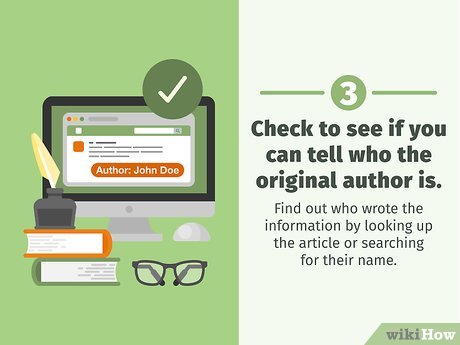
3Check to see if you can tell who the original author is. Find out who wrote the information by looking up the article or searching for their name. Check to see if the author is an expert or a journalist who often covers the subject to make sure they know what they’re talking about.XIf an article or information doesn’t list the author, it’s a sign that it could be false or misleading information.For example, an article about health and wellness written by a registered doctor is more credible than one without an author listed.
4Search online for the information in other sources. Look up the claim or information online to see if other news outlets or organizations are also saying similar things. If only 1 place is reporting something, it’s a sign that the info could be false or misleading.XFor instance, if you see an article about a wildfire in the rainforest, search online to see if other outlets are also covering it to verify it.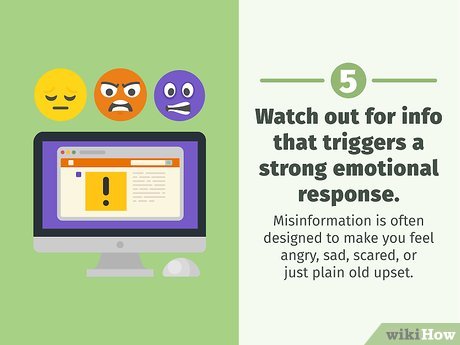
5Watch out for info that triggers a strong emotional response. Misinformation is often designed to make you feel angry, sad, scared, or just plain old upset. If you spot a claim, article, headline or any other info that causes you to feel a super-strong emotion, be wary. It could be a sign that it’s fake and designed to get a reaction out of you.XFor instance, if you come across a headline that says, “NEW LAW TAKES AWAY PET DOGS,” it’s most likely false or at least misleading.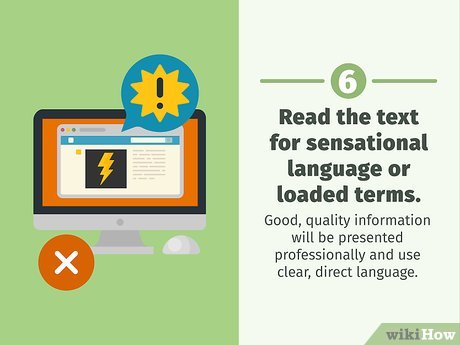
6Read the text for sensational language or loaded terms. Good, quality information will be presented professionally and use clear, direct language. Whenever you come across new information, read it carefully, and keep an eye out for language designed to make you feel a certain way about the subject.XFor example, a quality news article could say something like “authorities aren’t sure exactly what caused the accident and are still investigating it” while a shady or misleading source could say something like “clueless politicians have no idea what caused the accident and probably won’t ever figure it out.”Keep an eye out for insulting or offensive language as well.Method 2Method 2 of 3:Fake Memes and Images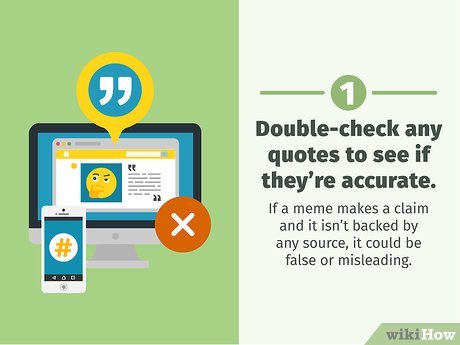
1Double-check any quotes to see if they’re accurate. There are a lot of memes out there that feature a quote attributed to a specific person. Run the quote through an internet search to find out who the actual author is. If it doesn’t match the meme, then it’s likely misinformation.XFor example, if you see a meme that says, “All cars must be hybrid by 2021” and it’s attributed to the Department of Transportation, be safe and run it through an internet search to see if it’s true.If a meme makes a claim and it isn’t backed by any source, it could be false or misleading.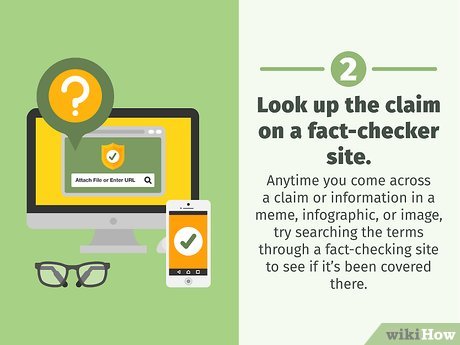
2Look up the claim on a fact-checker site. Anytime you come across a claim or information in a meme, infographic, or image, try searching the terms through a fact-checking site to see if it’s been covered there. Read the description on the site to figure out if the claim is true or misleading.XFor instance, if you see a meme that says that the government is sending citizens to Mars, see if a fact-checking site supports the claim.Find a list of fact-checking websites here: https://en.wikipedia.org/wiki/List_of_fact-checking_websitesNot every meme or claim that gets shared around on the internet and social media has been covered by a fact-checking site, but it’s still a good place to check.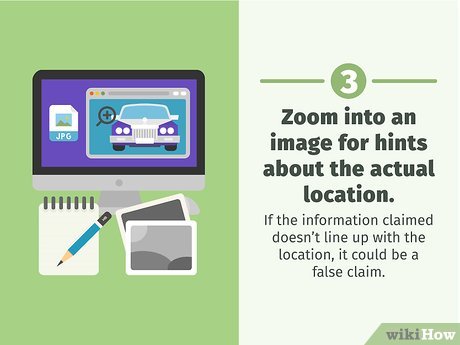
3Zoom into an image for hints about the actual location. Use clues in photos and images to help determine if the information claimed is accurate. Zoom in close and look for details such as the language on street signs, license plates on cars, flags in the background, or any other clues that tell you where the photo or image comes from. If the information claimed doesn’t line up with the location, it could be a false claim.XFor instance, if a meme or image says mentions a street in Los Angeles but the image shows street signs in Italian, or a vehicle with a license plate that isn’t from the US, then it’s likely misinformation.
4Do a reverse image search to find out when it first appeared on the web. Search engines like Google and Bing allow you to paste an image’s URL to find out where and when it was first posted. If it’s a really old image that’s being circulated like it’s new, then it’s misinformation. You may also be able to tell where the image originally came from, which can tell you if it matches the information.XSo if you see a meme or image that is claimed to be evidence of an alien spaceship, you can run a reverse image search. If it turns out the image is from 5 years ago or if it was originally posted to a satire website, then it may not be accurate.Use a tool such as RevEye to search for any previous instances an image appears online to see if it’s being used to push a false narrative.Method 3Method 3 of 3:Bots or Fake Accounts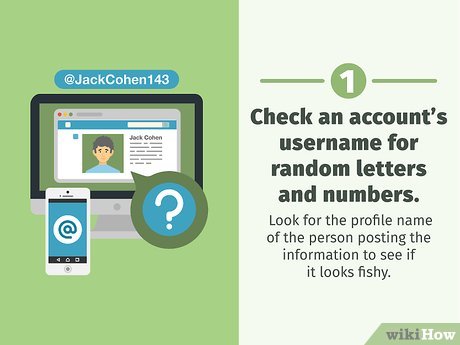
1Check an account’s username for random letters and numbers. Though it’s not a surefire test, if a user’s handle or screen name has a random string of letters and numbers in it, it could be a sign it was generated by a computer program. Look for the profile name of the person posting the information to see if it looks fishy.XIt’s especially sketchy if there’s a random string of letters or numbers in the handle of a famous person or politician. For instance, if “TomHanks458594” posts something, it could be a fake account or a bot.Remember, it’s not a dead giveaway, but it could be a sign that an account isn’t legitimate.
2Read the account bio to see if it matches the user’s activity. Most social media accounts have a small bio section where the user includes information about themselves or a brief description. Take a look at the bio to see if it matches the person and the content they’re sharing. If it seems off, it could be a fake account.XFor example, if an account shares a lot of articles about crime and violence but the bio claims to be about peace and love, it could be phony.Use your common sense as well. Does the account feel fake? Bot accounts try to seem real, but there may be something that seems off to you. Trust your gut.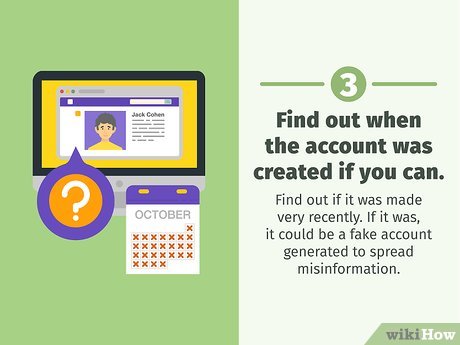
3Find out when the account was created if you can. Some social media platforms include the date an account was made on the profile page. Find out if it was made very recently. If it was, it could be a fake account generated to spread misinformation.XFor instance, if the account was made 2 months ago and shares nothing but outrageous claims, it could be a fake account.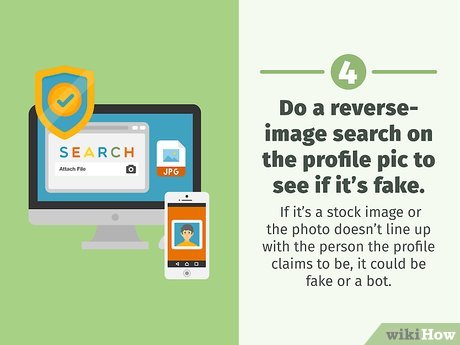
4Do a reverse-image search on the profile pic to see if it’s fake. Use a search engine like Google or Bing to upload the profile picture for an image search. If it’s a stock image or the photo doesn’t line up with the person the profile claims to be, it could be fake or a bot.XStock image profile pictures are a major clue that the profile isn’t a real person.A profile picture of a celebrity, cartoon, or any non-human image means a profile is anonymous and less reliable.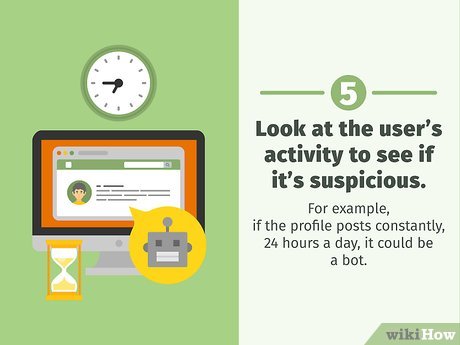
5Look at the user’s activity to see if it’s suspicious. Take a look at the profile’s timeline. If they post at all hours of the day, posts from different parts of the world, and includes polarizing political content retweeted from other accounts, it could be a bot or fake account.XFor example, if the profile posts constantly, 24 hours a day, it could be a bot.








